In any building, different rooms have different requirements. We design the spaces according to those requirements. Naturally, flooring is one of the most important design elements. You will never get to see the same flooring in a room and a bathroom.
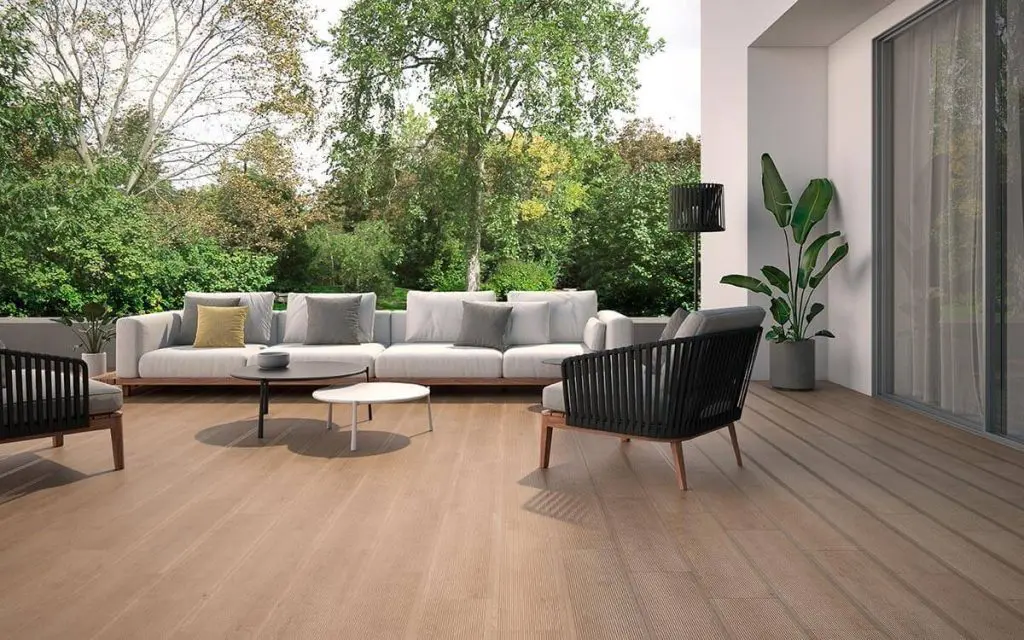
However, oftentimes people tend to overlook the fact that choosing the right flooring materials for balconies and terraces are just as important. They should be able to withstand external weather such as sunlight and rain. Additionally, the flooring should be durable as well as slip-resistance. Below are the few flooring materials suitable for balconies and terraces.
1. CEramic
Ceramic is a popular flooring material made up of mixing clay, sand, and water. Although commonly used in interiors, ceramic tiles are also suitable for outdoor spaces such as balconies, terraces, and even patios.
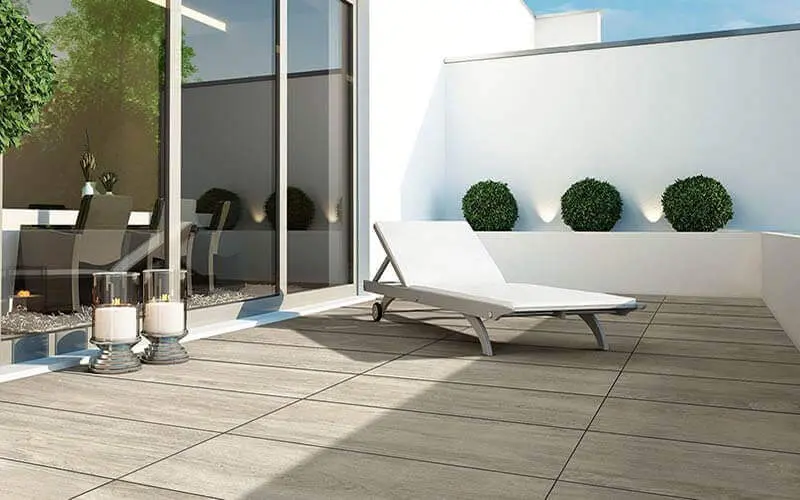
Pros of Ceramic Flooring
- Ceramic is easily one of the most versatile and low-maintenance flooring materials in the market.
- It is an affordable tiling material and much cheaper than stone, wood, and even porcelain.
- Ceramic tile is lighter which makes them easier to handle, cut, and install.
- It is available in a wide range of colors, styles, patterns, and even textures.
Cons of Ceramic Flooring
- It is more likely to get damaged as compared to other materials.
- Ceramic is a porous material so it is vulnerable to water seeping through in the long run.
- Bad weather can fade or damage the patterned tiles if expansion gaps are not left between tiles.
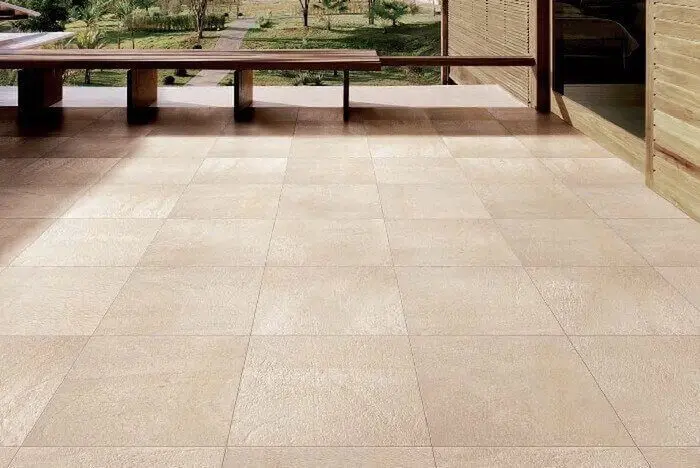
2. Natural Stone
If you are planning to have a luxurious design for your house, then you can choose to install any kind of natural stone for balconies and terraces. Sandstone and slate are some of the best stones for such purposes. Avoid using materials like graphite and marble as they lose their shine due to harsh weather and can be slippery.
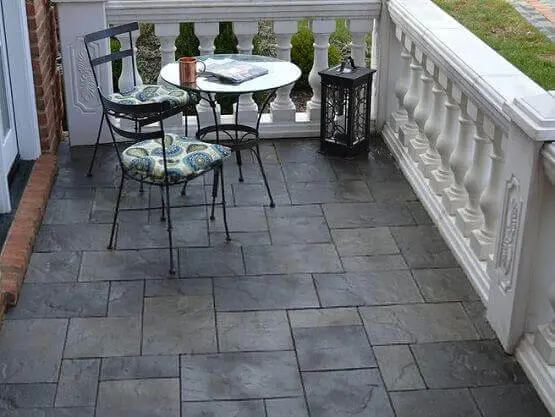
Pros of Natural Stone
- There is no doubt that natural stones are extremely durable and long-lasting. When used the right type of stone, you wouldn’t have to worry about it being damaged by weather and losing its beauty.
- It is naturally cool so it is suitable for Indian homes where the weather is hot for most of the year.
- It provides a very pleasing and natural aesthetic impact that most materials cannot achieve.
Cons of Natural Stone
- It is difficult to choose the right stone type for outdoors since most natural stones are highly porous, making them unsuitable for being exposed to rain.
- Graphite and marble are two of the most popular natural stones used in designs. However, both of them are not very suitable for use in balconies and terraces, so it leaves fewer options for homeowners.
- Installation of natural stone tiles is difficult and time-taking. Not to mention that they are extremely heavy and need to be sealed properly with resins.
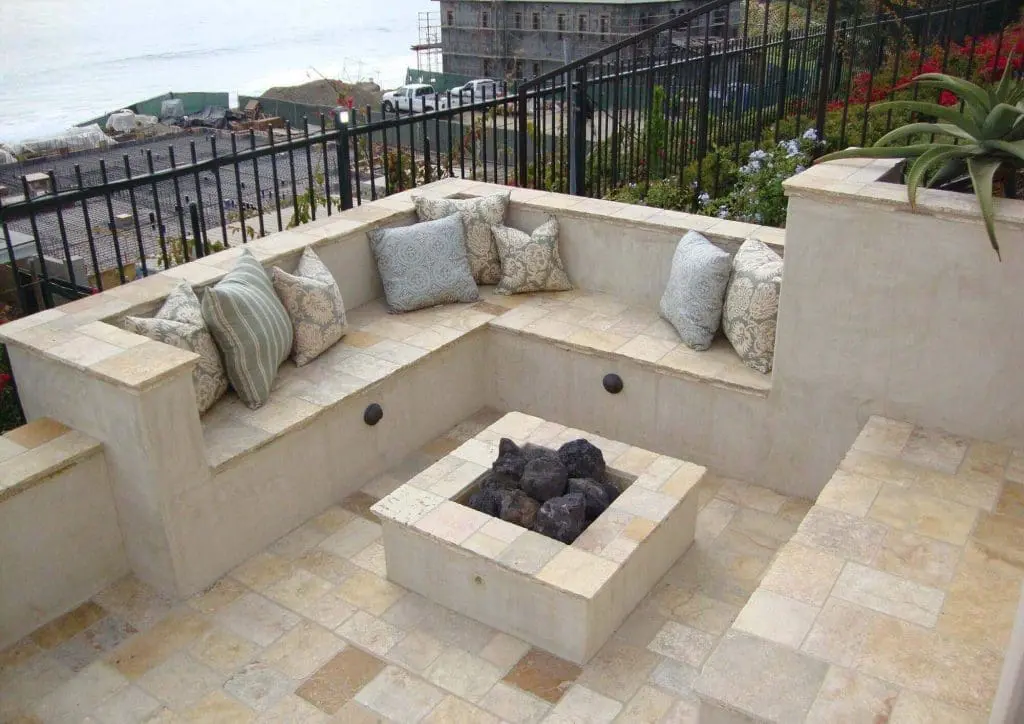
3. Terracota
Terracotta tiles are suitable for those who want to create a rustic and earthy look in their house. Terracotta tiles are clay tiles created from porous clay with high iron content, creating a reddish-brown color. The word terracotta is derived from Italian, meaning “baked earth”. It is one of the oldest building materials and is still popular in vernacular and sustainable homes.
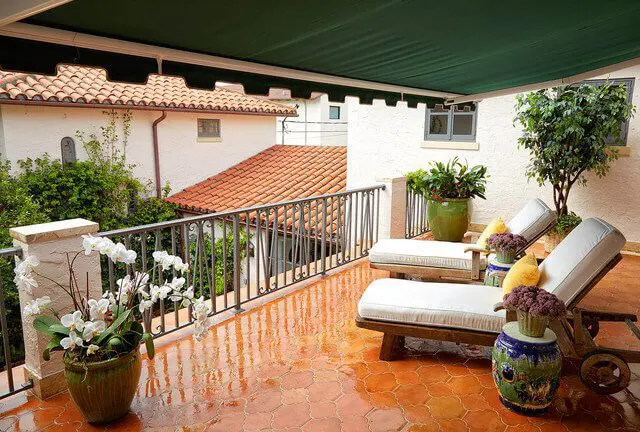
Pros of Terracotta flooring
- Terracotta provides beauty at cheap rates. You won’t have to compromise the aesthetics of your house in exchange for saving money by choosing less expensive flooring materials.
- These days, terracotta tiles are available in varying colors, textures, patterns, and designs.
- Terracotta is extremely low maintenance. Due to its simple texture, it is very easy to clean the stains with just a mop, a good cleaning agent, and some water.
Cons of Terracotta flooring
- Terracotta tiles need to be sealed with penetrating sealants while the joints between them are filled with cement grout. So, replacement and repair of a single tile can be difficult if it gets damaged.
- Terracotta is very porous so it traps a lot of dirt. To avoid that, you’d have to consider a non-slip type of glazed finish on it. Glazed tiles are much easier to maintain as compared to unglazed tiles.
- The tiles need to be resealed at regular intervals of time.
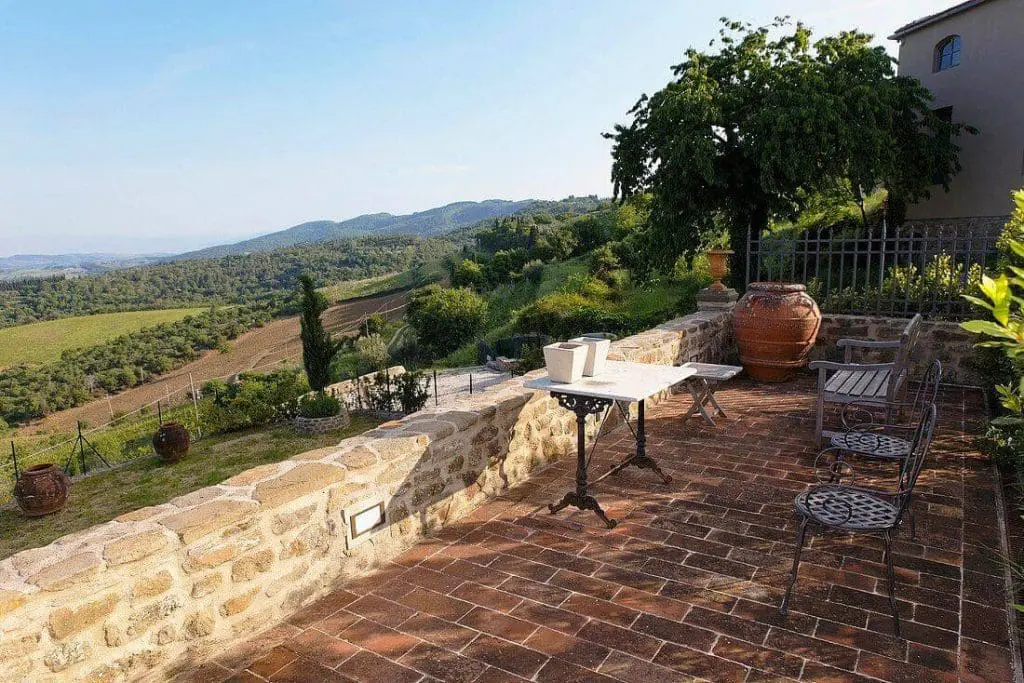
4. Hardwood flooring
Wood is beautiful and timeless. Not only is it one of the most common building materials in the world, but it is versatile as well. Whether you use it indoors or outdoors, wood flooring can elevate the aesthetics of the entire surrounding area. As a flooring material, hardwood creates a luxurious look to the space and is quite practical too. A few hardwoods suitable for outdoor flooring are cedar, redwood, teak, and so on.
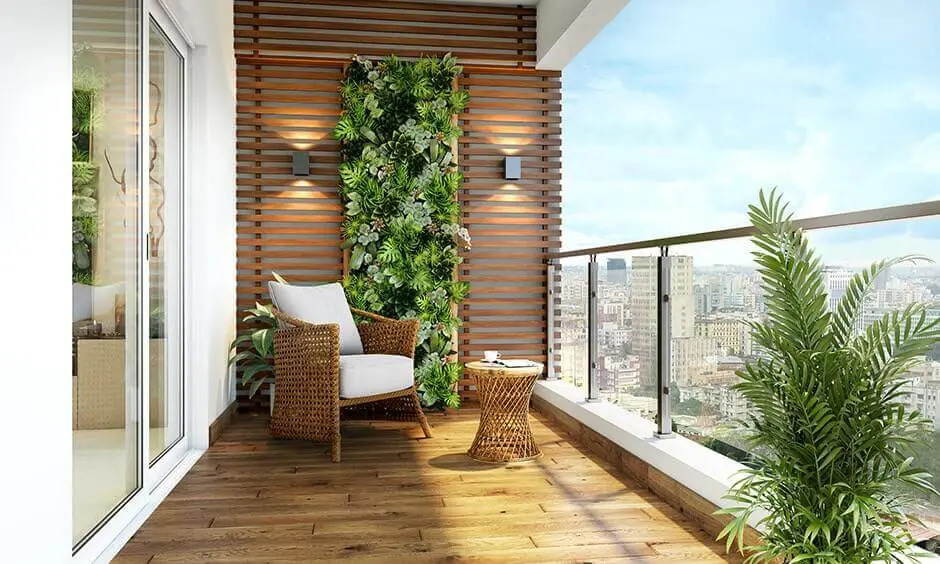
Pros of Hardwood Flooring
- The better the quality of the wood, the more it will be water-resistant.
- Wood is just as much of a long-term investment as natural stone. Hardwood such as teak can last up to over a century.
- Wood is low maintenance as it can be cleaned by simply mopping. It doesn’t attract much debris, dust, or dirt, so you won’t have to go through the trouble of regularly cleaning it.
Cons of Hardwood Flooring
- Hardwood is one of the most expensive flooring materials available in the market. It is usually installed over sub-flooring, which makes the installation a complex process. So, the cost of getting professional help may also vary.
- Wood is prone to get attacked by termites. Termites feed on wood so choosing the best quality of wood is crucial to avoid such problems.
- Wood is also vulnerable to dents and scratches. So, it is not recommended for people to have pets like dogs or cats in their homes.
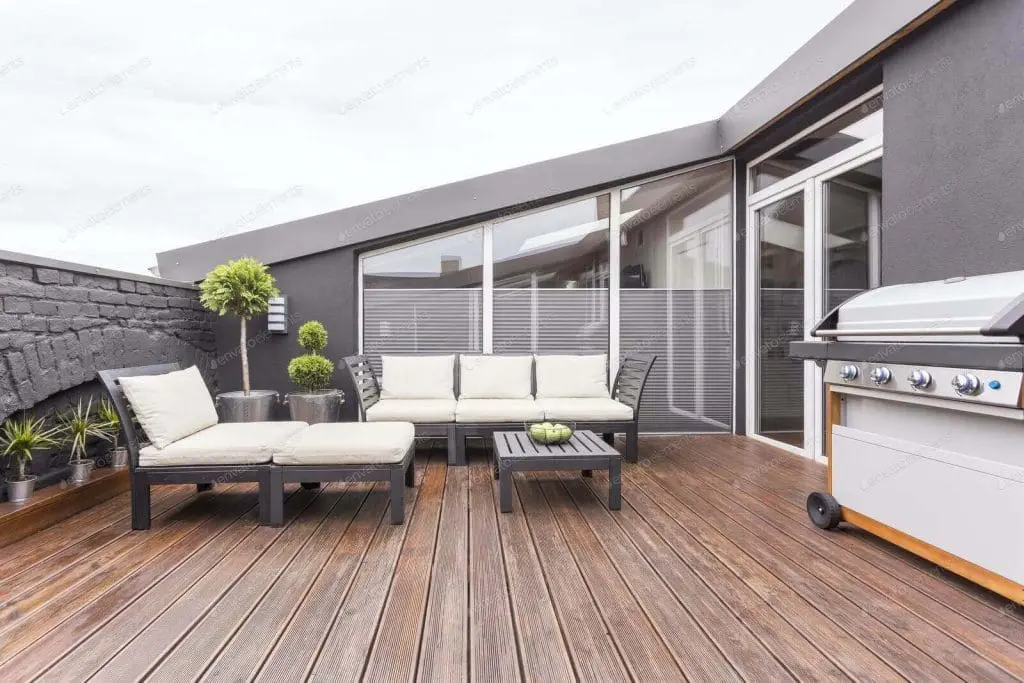
5. Stamp Concrete
Stamp concrete which is also called as textured or imprinted concrete is concrete flooring imprinted with a design on the top. There are various choices of colors and designs that can be opted by users. This requires less maintenance and more durable than other types of floorings.
Pros of Stamp Concrete
- Is more durable than natural stone or tiles. Hard or heavy weight materials can be placed on the terrace
- This is more durable and long lasting than other types of floorings
- Non-skid additive can be added to make the flooring anti-skid
Cons of Stamp Concrete
- Stamp Concrete can develop minor cracks
- This type of flooring needs periodic cleaning and resealing
- Repairs and replacement can be difficult and costly
These are the four best types of flooring materials suitable for balconies and terraces. Depending on your preference, home design, and budget, you can easily choose which one to install for your balconies and terraces. However, you need to pay attention to the type of finish you use on your flooring and it is also necessary to choose slip-resistance flooring for such purposes.
– Tulisha Srivastava





